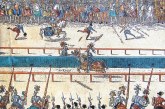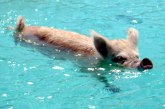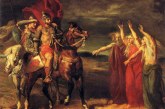
Wilhelm II, popularly known as Kaiser Wilhelm, was the last Emperor of Germany and is best known for leading that country in World War I. He pursued a rather aggressive foreign policy based on the idea of the “survival of the fittest”, but proved to be an ineffective war leader. His personal life was full of controversies and his emotionally-charged statements were known to cause political scandals, which made him the object of ridicule in many newspapers and other media.
Kaiser Wilhelm was born in Berlin and received a typically Prussian militaristic and hyper-masculine upbringing, but was born with a withered left arm, which negatively impacted his emotional development – he felt a constant pressure to compensate and “act tough”. One of the results of this was the emperor’s obsession with military uniforms. In fact, he was almost never seen not wearing one. It is estimated that he possessed hundreds of them (according to some sources 295 or even 400), 30 of which were in regular use. Fourteen valets and two chief valets were employed to take care of the emperor’s wardrobe.
The Kaiser was the self-appointed colonel of around dozens of regiments – around 50 according to some claims. He therefore allegedly owned uniforms of all these Prussian cavalry, infantry, and artillery regiments as well as those of the other German states and of the countries in which he held an honorary rank. It was said that he had a uniform for every occasion. For example, when visiting an aquarium he would don the uniform of an admiral, he would wear a British Dragoon Guard’s uniform while eating an English desert, and at home he would wear one of his “informal” uniforms. The Kaiser also owned a solid gold helmet with a crowned eagle on top.
Kaiser Wilhelm even had a hand in designing his soldiers’ uniforms, which often made them stylish but impractical (such as the spiked helmet and the long gray coats), and forbade his officers to dance the then-popular tango while in uniform, considering it unseemly.




